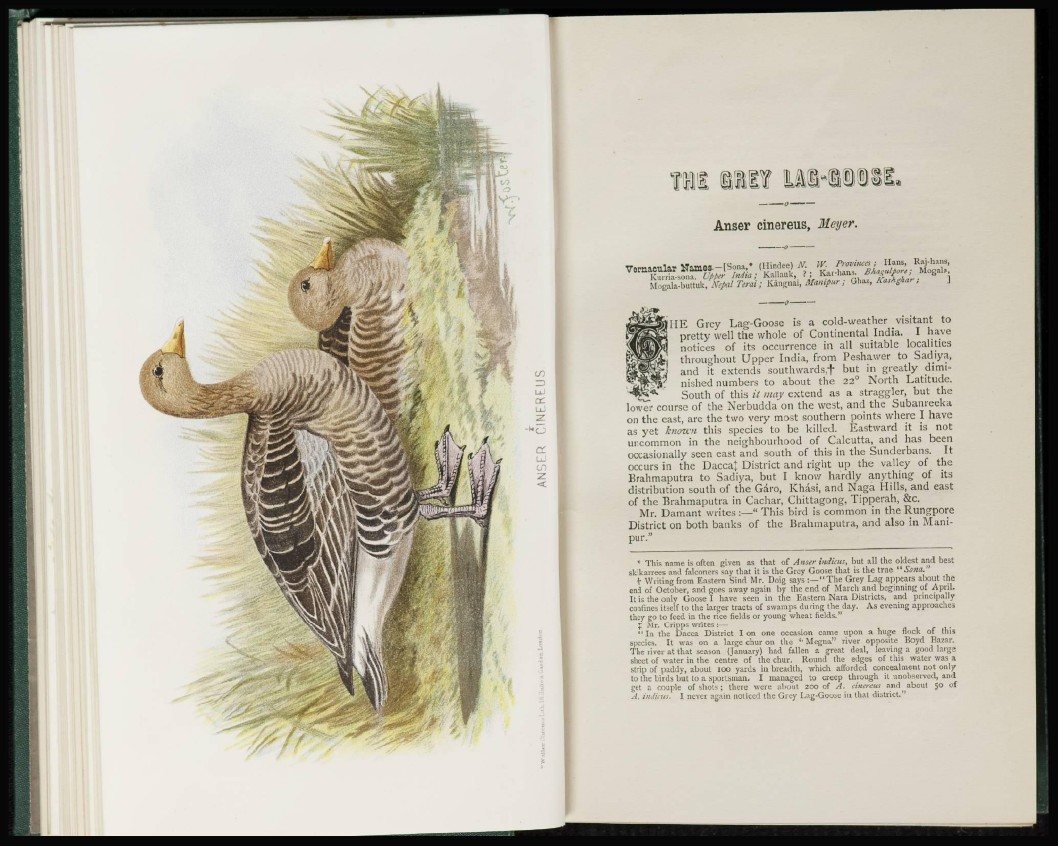
Anser cinereus, Meyer.
MoKak"buUuk,^/ TWtf ; Kangnai, «lw*»r ; Ghaa, Kashghar ; ]
[IE Grey Lag-Goose is a cold-weather visitant to
pretty well the whole of Continental India. I have
notices of its occurrence in all suitable localities
throughout Upper India, from Peshawer to Sadiya,
and it extends southwards,"!" but in greatly diminished
numbers to about the 22° North Latitude.
South of this it may extend as a straggler, but the
lower course of the Nerbudda on the west, and the Subanreeka
on the east, are the two very most southern points where I have
as yet known this species to be killed. Eastward it is not
uncommon in the neighbourhood of Calcutta, and has been
occasionally seen east and south of this in the Sunderbans. It
occurs in the Dacca]: District and right up the valley of the
Brahmaputra to Sadiya, but I know hardly anything of its
distribution south of the Gdro, Khasi, and Naga Hills, and east
of the Brahmaputra in Cachar, Chittagong, Tipperah, &c.
Mr. Damant writes :—" This bird is common in the Rungpore
District on both banks of the Brahmaputra, and also in Manipur."
* This name is often given as that of Anser indiciis, but all the oldest and best
skikarrees and falconers say that it is the Grey Goose that is the true "Sana."
+ Writing from Eastern Sind Mr. Doig says :—"The Grey Lag appears about the
end of October, and goes away again by the end of March and beginning of April.
It is the only Goose I have seen in the Eastern Nara Districts, and principally
confines itself to the larger tracts of swamps during the day. As evening approaches
they go to feed in the rice fields or young wheat fields."
J Mr. Cripps writes :—
" In the Dacca District I on one occasion came upon a huge flock of this
species. It was on a large chur on the '• Megna" river opposite Boyd Bazar.
The river at that season (January) had fallen a great deal, leaving a good large
sheet of water in the centre of the chur. Round the edges of this water was a
strip of paddy, about 100 yards in breadth, which afforded concealment not only
to the birds but to a sportsman. I managed to creep through it unobserved, and
get a couple of shots; there were about 200 of A. cincreits and about 50 of
inditus. I never again noticed the Grey Lag-Guo^e in that district."